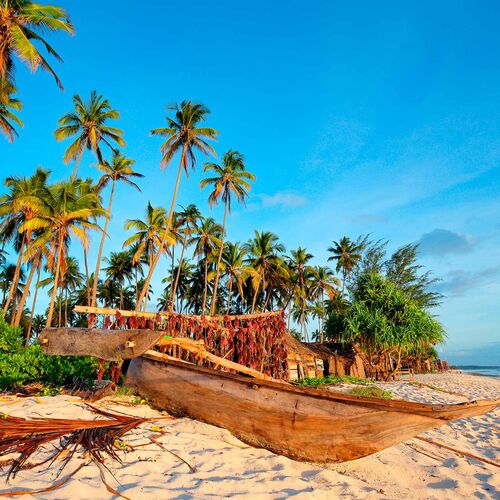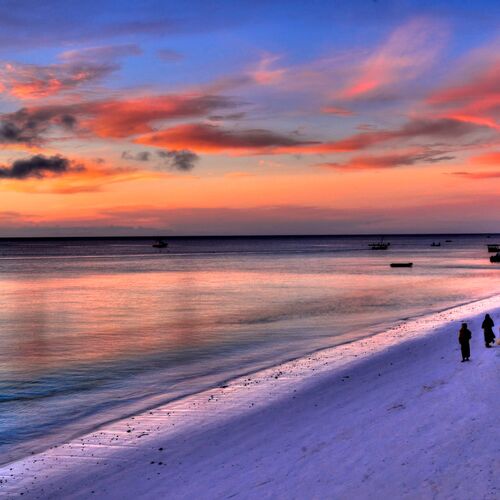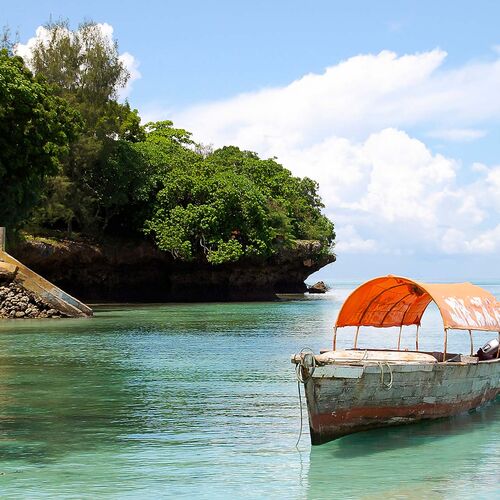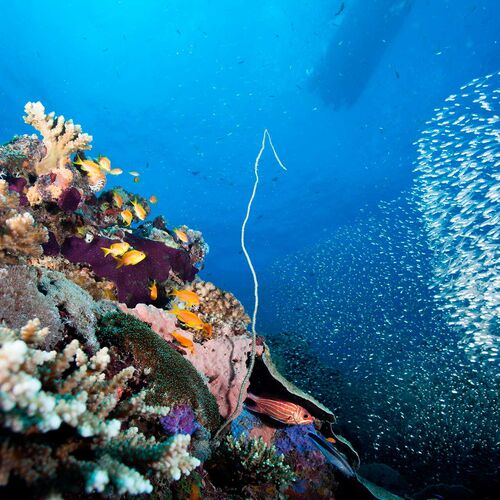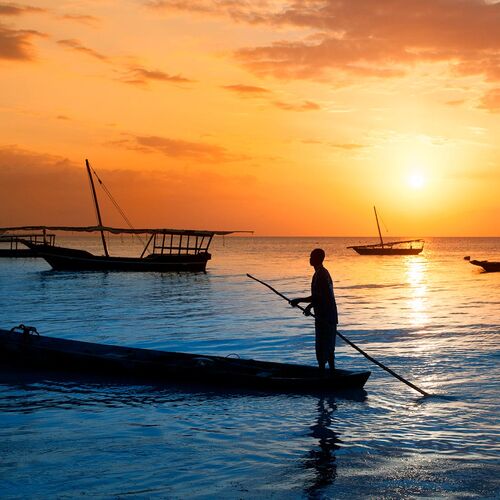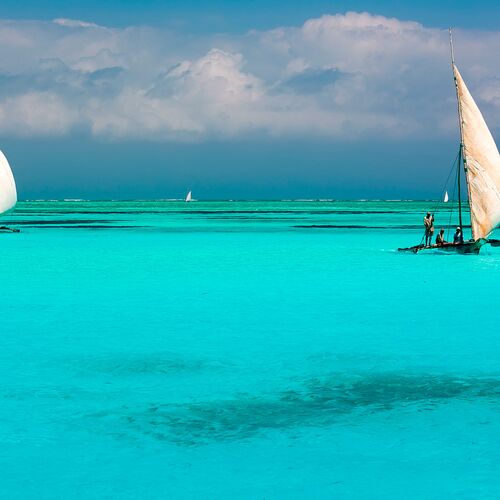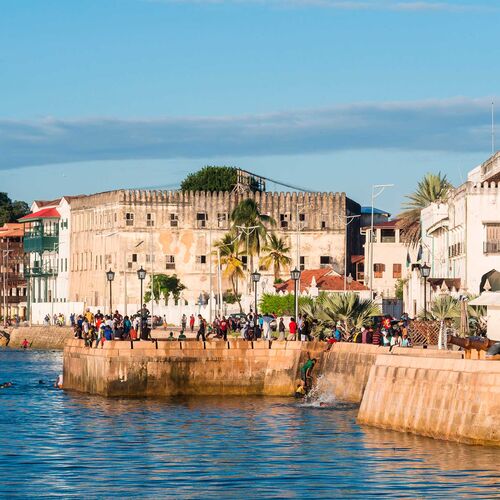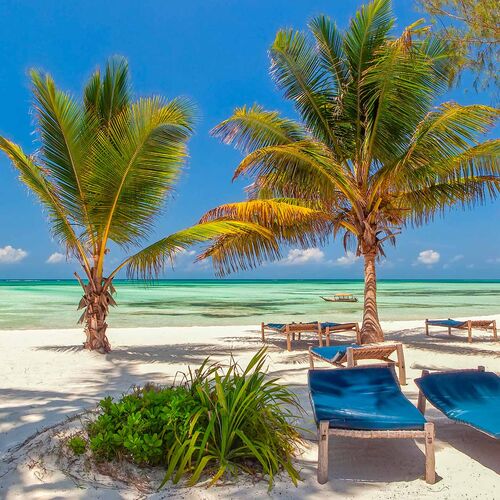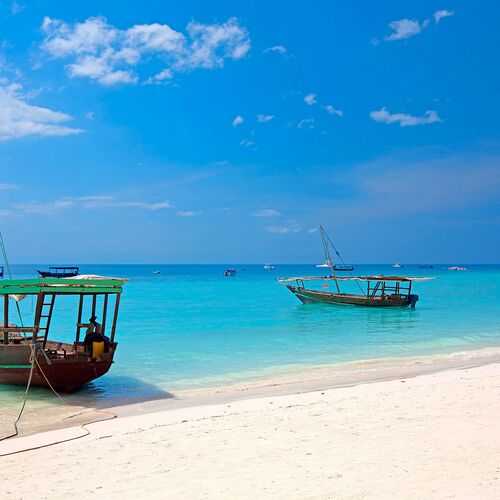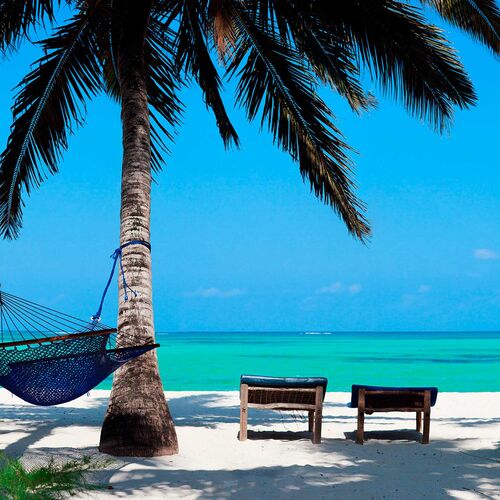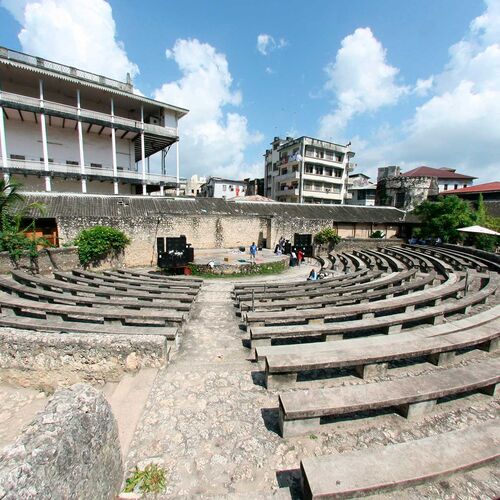Zanzibar and the Tanzanian coast
Even the name Zanzibar sounds magical and exotic, and rightly so, as here you can find both white sandy beaches fringed with palm trees together with cultural and historical sites of global importance. Zanzibar, which was formerly an independant sultanate, is now a part of the United Republic of Tanzania, of which the mainland was formerly known as Tanganyika, but changed name when the Republic was founded in 1964. Zanzibar consists of a number of small islands together with the two large islands of Pemba and Unguja, of which the latter is often referred to as Zanzibar alone. It is here that you also find most of the beach hotels, the majority of which are of a high standard. The island has an area of around 1,500 km2, and lies 40 km from the mainland north of Dar es Salaam, with which it has good flight- and ferry connections. The ease of getting to the capital makes it an ideal starting point for a Tanzania safari. The island’s airport also has good connections to Arusha, Nairobi in Kenya as well as a few flight directly to Europe.
Zanzibar is densely populated with around one million inhabitants, of which nearly one third live in the island´s capital Zanzibar City, with its historical center of Stone Town. Stone Town which is included on UNESCO´s list of world heritage sites is well worth visiting at least once – ideally you should spend a couple of nights in one of the town’s fine hotels that has been established in beautifully restored historic buildings. The island has a humid tropical climate, most rain falling in November to December and March to May. January and February are the hottest months, while it is coolest during June and August. The island is surrounded by coral reefs and a number of small coral islands. The best tropical beaches are on the east coast, as are some of the best hotels. This coast has a large tidal range, which means at low tide it is often best to swim in the hotel swimming pool or go for a walk along the exposed reef flats, go snorkeling out on the reef or take a trip into the island.
If you prefer just swimming and lying on the beach all day, then the north coast is your best choice, but many good hotels have also been built here, so you may find the beach more crowded. The ultimate solution to this dilemma is to stay in secluded luxury on the small private Mnemba Island, but this is rather expensive. Zanzibar offers plenty of activities in addition to the classic sports of sailing, snorkelling and fishing, for example visit a spice plantation, take a tour to the beautiful Jozani Forest with its distinctive monkeys, or swimming with wild dolphins off the south coast. For scuba divers some of the small islands off the coast are the highlights here, while more experienced divers will find that the neighbouring islands of Pemba and Mafia, respectively 50 km to the north and 150 km to the south, offer the greatest attractions.
The coast along Tanzania’s mainland offers far fewer beach hotels, even though there are long stretches wit beautiful sandy beaches. But here you can find a few hotels of a very high standard, where the focus is on a relaxed beach holiday on remote beaches, with few tourists. Nature and wildlife are also important here, especially at the Saadani national park, where a few large wild animals can be found right next to the Indian Ocean.
Highlights:
- A relaxing holiday on wonderful tropical beaches, staying in good beachfront hotels.
- Classic water sports such as sailing, snorkeling and diving on and in the clear, warm ocean waters
- Visit a spice plantation, a tropical forest with rare monkeys or swim with wild dolphins
High season: January to March and July to October
These attractions can be seen on the following tours





